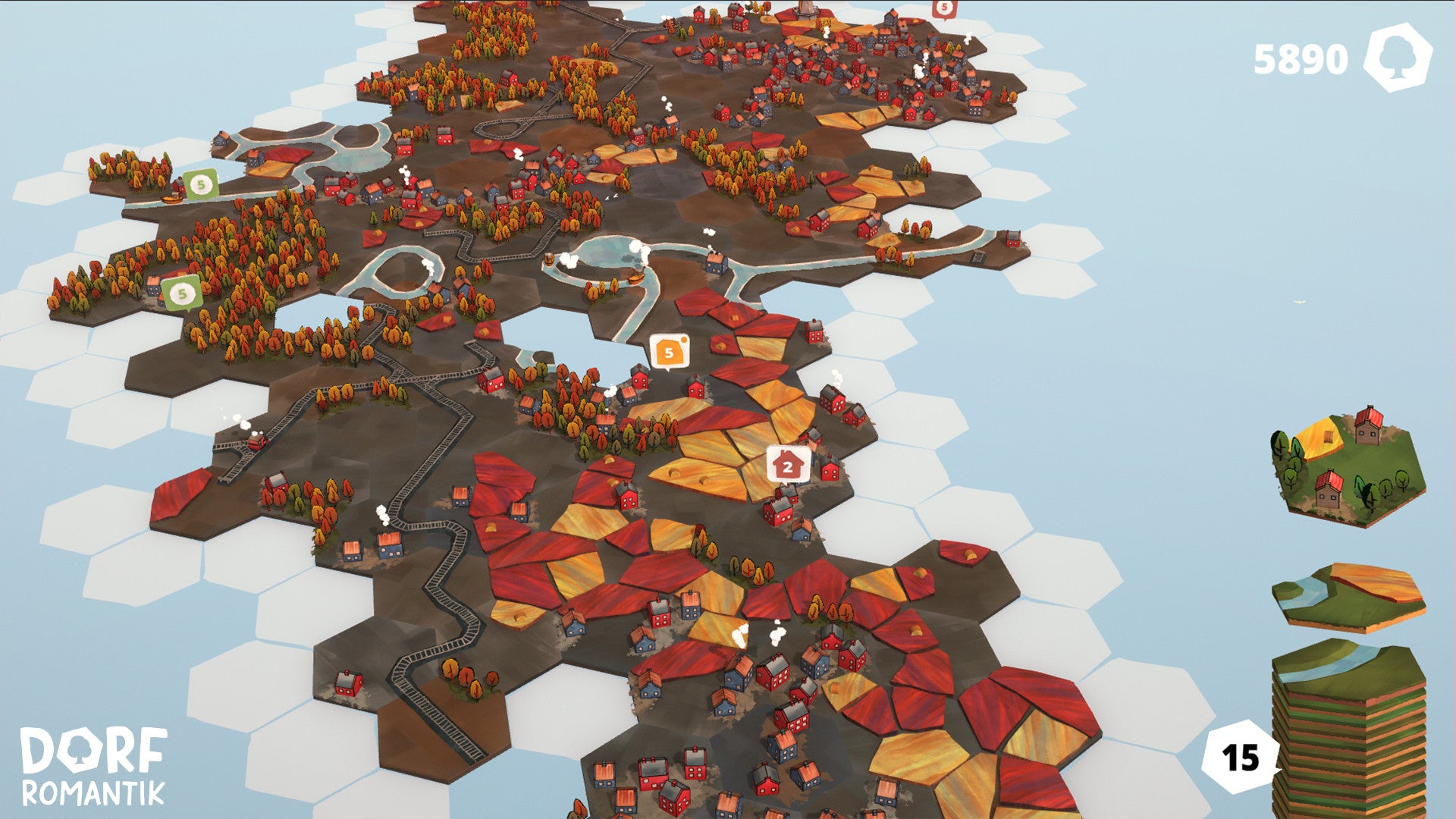Both games click when you realise you’ve made a mistake, and you then realise that you finally understand the reason why. Dorfromantik gives you a stack of tiles to place on an expanding hex play area. Tiles might have trees or fields or houses - that kind of thing. You’re encouraged to connect features. How big can you make your forest, your farmland, your town? But then quests come in and you need to recalibrate. Quests are tiles that have very specific needs. Connect this cluster of houses to twenty more houses. Connect this farmland to fields, but only on these sides. Quests are worth doing not just because of the cheery cash-register victory sound, but because they’re the way you earn new tiles to keep your stack healthy and your landscape growing. Throw in train tracks and rivers and you’ve got a lovely bubble bath of a game to ease into. Both Islanders and Dorfromantik are cool, I think, because you’re ultimately engaged in an aesthetic enterprise - build something that looks pleasing - but the aesthetics emerge not so much from your feeling for how things should look but from the rules that govern maximising points and earning new things. The beauty of the landscape is a byproduct. It’s also one of those games that seems very applicable, as Tolkien might have put it. It doesn’t really enforce a specific analogy but it makes you think about everything from ox-bows to cell division over the breezy course of a game. I love Dorfromantik and I can’t wait to play the finished thing in late March.
